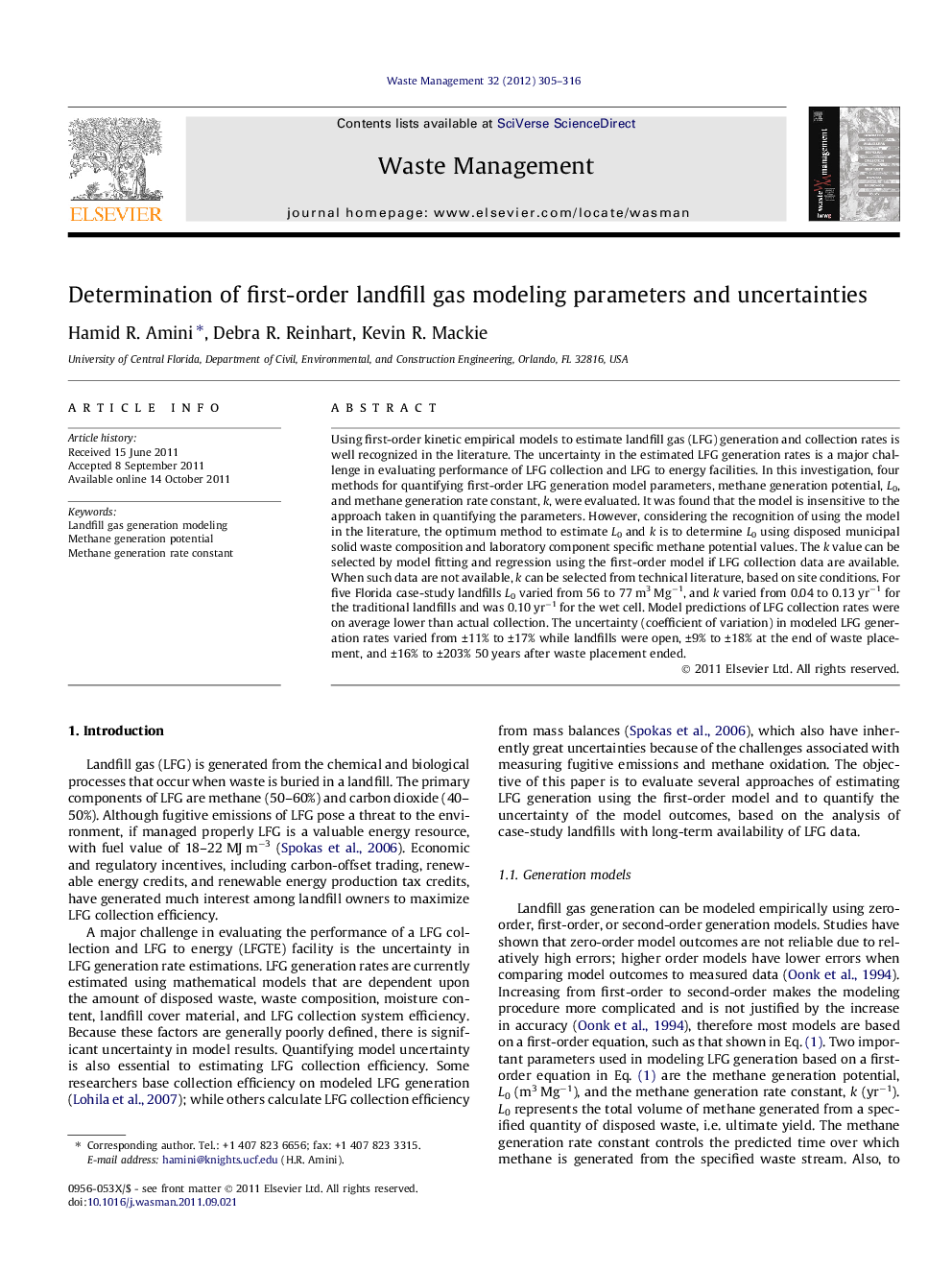| کد مقاله | کد نشریه | سال انتشار | مقاله انگلیسی | نسخه تمام متن |
|---|---|---|---|---|
| 4472157 | 1315059 | 2012 | 12 صفحه PDF | دانلود رایگان |

Using first-order kinetic empirical models to estimate landfill gas (LFG) generation and collection rates is well recognized in the literature. The uncertainty in the estimated LFG generation rates is a major challenge in evaluating performance of LFG collection and LFG to energy facilities. In this investigation, four methods for quantifying first-order LFG generation model parameters, methane generation potential, L0, and methane generation rate constant, k, were evaluated. It was found that the model is insensitive to the approach taken in quantifying the parameters. However, considering the recognition of using the model in the literature, the optimum method to estimate L0 and k is to determine L0 using disposed municipal solid waste composition and laboratory component specific methane potential values. The k value can be selected by model fitting and regression using the first-order model if LFG collection data are available. When such data are not available, k can be selected from technical literature, based on site conditions. For five Florida case-study landfills L0 varied from 56 to 77 m3 Mg−1, and k varied from 0.04 to 0.13 yr−1 for the traditional landfills and was 0.10 yr−1 for the wet cell. Model predictions of LFG collection rates were on average lower than actual collection. The uncertainty (coefficient of variation) in modeled LFG generation rates varied from ±11% to ±17% while landfills were open, ±9% to ±18% at the end of waste placement, and ±16% to ±203% 50 years after waste placement ended.
► Field data was used to estimate first-order landfill gas (LFG) model parameters.
► Outcomes assist regulators to make informed decisions regarding LFG collection.
► Outcomes can be used for economic evaluation of LFG to energy generation projects.
► Further studies are recommended to improve the sensitivity of the model.
Journal: Waste Management - Volume 32, Issue 2, February 2012, Pages 305–316